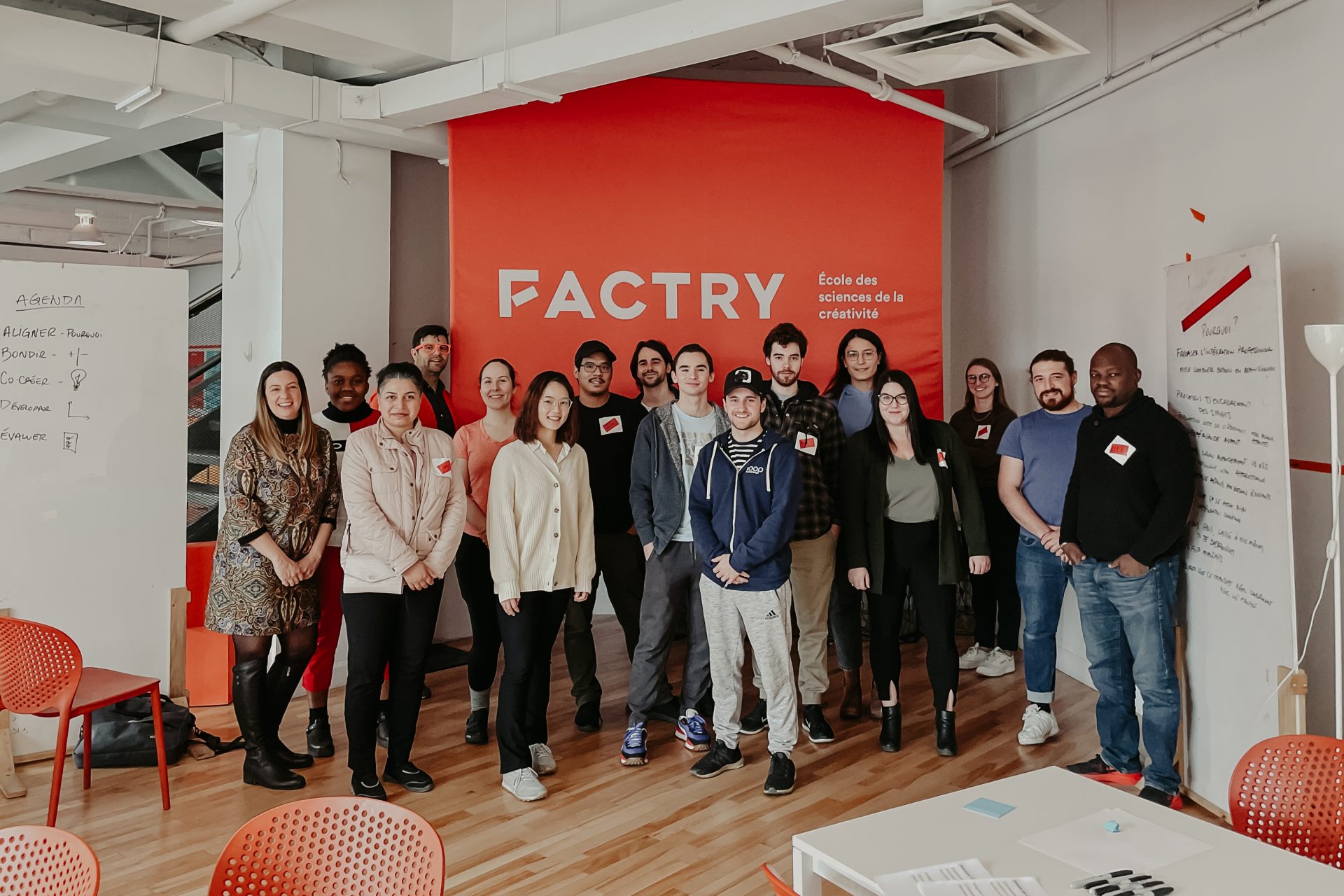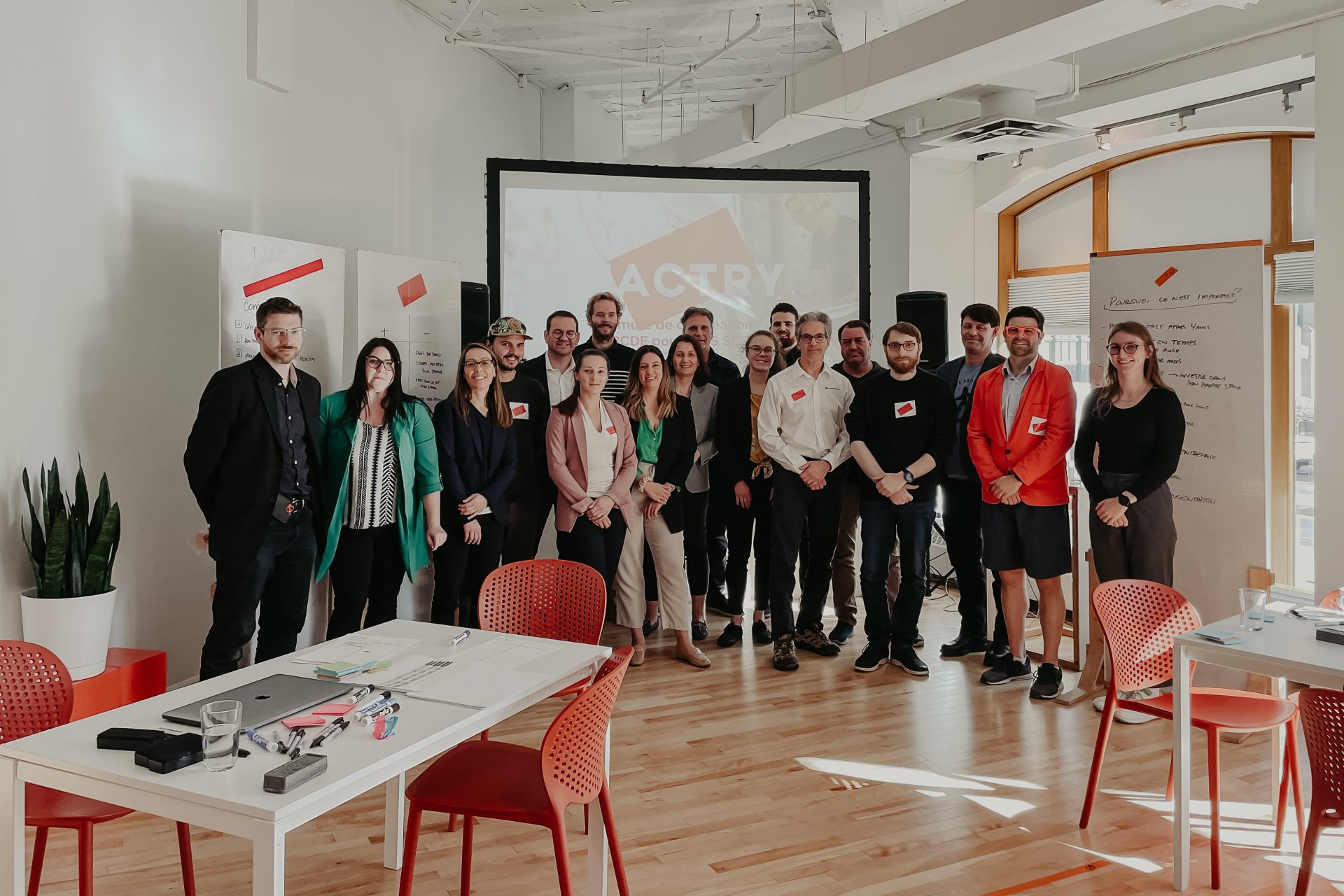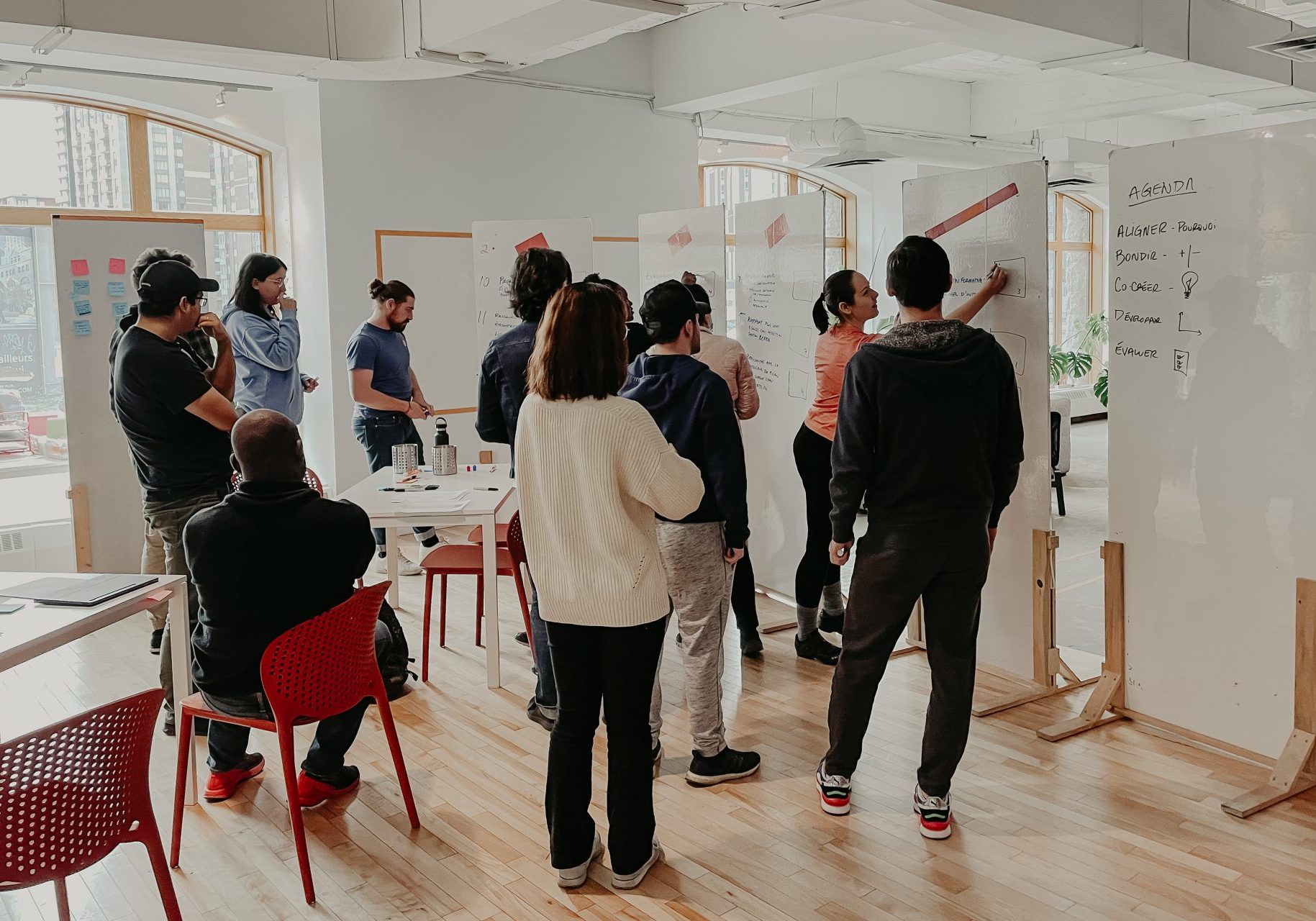The Client
Since 1974, the École de technologie supérieure (ÉTS) has specialized in applied engineering research and teaching as well as in technology transfer. It trains engineers and researchers who are connected to the concrete needs of industry.
What’s at Stake
Work placements are a major component of training at ÉTS: the 100% cooperative bachelor’s program is a distinctive feature of the university. However, with the accelerated transformation of the job market caused by the Covid-19 pandemic, the processes for supervising and evaluating internships must be improved.
The Cooperative Education Department (SEC) at ÉTS is undertaking a bold redesign to optimize these processes. The team called on La Factry to help them take the pulse of their clientele. The team had three months to complete a functional pilot project, an extremely tight deadline given the university context, which is governed by several regulations and standards.
The Proposal
La Factry is partnering with the SEC redesign team to design two co-creation workshops that will allow ÉTS to listen to what the student community and the internship community respectively have to say about the internship supervision and evaluation processes.
Rather than the usual discussion groups or focus groups, the workshop leader responsible for the mandate for La Factry, Alexandre Joyce, proposes workshops inspired by the design thinking methodology. Not only will participants be able to comment on the mechanisms in place, but they will also be able to propose solutions to the problems identified.

Student community and internship group.
It’s one thing to ask people to come up with the pros and cons of a product — anyone can do that,” says Joyce. But asking them to create the future, to bring ideas to the table, requires much more commitment from participants.”
“The tools that La Factry works with, the way Alexandre Joyce structured the workshops to organize the thinking, that was new for us, and it really inspired us,” adds Fanny Leblanc, internship coordinator at ÉTS.
Along with Fanny Leblanc and Jessica Desmeules, also an internship coordinator, Alexandre Joyce is in charge of designing the meetings, according to the needs and challenges of the SEC.
I adapt the co-creation method I use depending on the central issue,” he explains. You have to figure out what content to present to people to get richness out of the discussion, to ignite their critical thinking, and to cause leverage that will naturally lead them to ask themselves what they would like for the future.”

The Work
In November, the two workshops – each three hours in length – are held over two days. The student group and the employer group are invited to a separate discussion session, structured around a five-step method that is simply called “ABCDE”.
This approach allows, in order, to align (A) the discussion with the objectives, to bounce (B) by reacting to the existing process, to co-create (C) by proposing solutions to the problems, to develop (D) the ideas that emerge by sorting them, and finally to evaluate (E) the relevance of the different leads by prioritizing them.
On the day, Alexandre Joyce arrives in his Dr. Future costume, complete with white coat and zany glasses. “When you want to attract people’s creativity, you have to show some creative courage yourself,” he explains.
The workshop master and the two ÉTS managers then do everything they can to create an environment that encourages openness and creativity.
“We did a little presentation in the morning before we started to say: go ahead, let yourself go, we’re ready to be challenged. Alexandre Joyce really created this context of favorable exchanges: we don’t have his training. We were impressed by his ability to frame the discussion, to redirect it to our objectives when it deviated from them,” says Fanny Leblanc, who attended both workshops with her colleague.
“It was important for us that our clients tell us the real story,” says Jessica Desmeules.
Very connected to its community, the SEC already had a good idea of the issues experienced by each group. A classic, recalls Alexandre Joyce.
“Often, when we ask the companies we’re working with what they learned during the listening workshops, they’ll say something like: we already knew that. That sounds like it discredits the effort they made, but what the exercise allows, besides of course validating perceptions, is to measure the intangibles in the participants’ reaction.”
Indeed, during the discussion, some elements generate much more emotion than others, which is a good indicator of priority issues. During the co-creation workshops with ÉTS, Alexandre Joyce is accompanied by his colleague Maude Vézina, who is responsible for recording and organizing all the tangible (criticisms, ideas) and intangible (reactions, intensity) data emanating from the discussion.
This step confirmed a lot of what we were feeling too,” says Jessica Desmeules. When you start listening to people, you realize that if you are experiencing an issue on your end, probably the other parties involved in the work are experiencing the same thing from a different angle.”
But it was the idea prioritization (E) step that inspired Fanny Leblanc and Jessica Desmeules the most. The final activity, which involved ranking the ideas pitched in step C and sorted in step D according to a simple system (favorite, home run, or nudge), made it very clear what priorities the SEC needed to address. A gold mine for an organization forced to work under very tight deadlines.
“The activity forced participants to make choices: Alexandre Joyce was able to cut through the noise and get to the heart of the matter,” says Fanny Leblanc.
“If we had led the discussions by ourselves, we would have received this information, but we might not have been able to go into the nuances. That was really rich,” adds Jessica Desmeules.
The two coordinators even went through the “coup de cœur, coup de circuit, coup de pouce” exercise with their own colleagues when it came time to present them with the proposal for the development of the new internship supervision and evaluation scheme.
The Result
Beginning in the Winter 2023 semester, a cohort of 40 interns will participate in the pilot project that will serve to test the new process.
This ambitious project was made possible by the involvement of five full-time and three part-time internship coordinators. The people in charge of the redesign have not been idle: even before the final meeting with Alexandre Joyce to determine the actions to be prioritized according to the results of the co-creation workshops, they had already worked on certain tools whose relevance had become obvious during the workshops.
“A large part of the added value of this type of exercise is that it creates commitment,” says Alexandre Joyce. “It’s one thing to say to yourself, ‘Oh, we should do that’, but when the request comes from the user himself, it makes you want to work on the project. Then you know that what you’re doing is impactful because people have told you so. Listening to them allows you to be in a service posture, and to feel that your work is important.”
Moreover, in a highly standardized institutional context, it took some good arguments to bring about change and to unite the team around the work site.
“Changing our processes for supervising and evaluating internships is no small feat,” recalls Jessica Desmeules. “La Factry gave us legitimacy with our team to justify changes to the way they work. It allowed us to explain why we need to make these changes even if it’s going to be uncomfortable at first: not because we said so, but because our clients told us so.”

Employer group.

